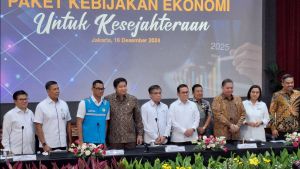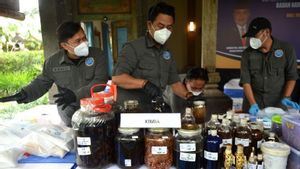JAKARTA - The Yogyakarta-Solo Commuter Line electric train (KRL) will start operating in February. The presence of this KRL is expected to encourage the emergence of economic center growth in the two regions.
Director General of Railways at the Ministry of Transportation (Kemenhub) Zulfikri projects that the Jogja-Solo route can carry as many as 6 million passengers in 2021.
"The projection before development in 2021 can carry nearly 6 million passengers in 2021, will increase significantly, including services in 2035 reaching 29 million passengers who will use the mass transit route in Jogja-Solo," he said in a webinar entitled 'The Coming of KRL Yogya-Solo' , Tuesday, January 19.
Zulkifli explained that the projection is based on the fact that Yogyakarta-Solo has become an agglomeration area with a population of 10 million. So that it requires adequate mass transportation.
Physical development is already 91 percentHead of the Class I Railway Engineering Center for the Central Java Region, Putu Sumarjaya, revealed that the physical construction process is almost complete. This means that soon this electric train can be enjoyed by people in the Yogyakarta and Solo regions.
"The current work progress is physically 91 percent, where the rest of the work is the finishing of operational support facilities," he said, in a webinar entitled 'The Coming of KRL Yogya-Solo', Tuesday, January 19.
The construction of the Jogja-Solo KRL has been started since 2011, namely a feasibility study for electrification development across the Kutoharjo-Yogyakarta-Solo route. Then, in 2012, there was a DED electrification across Yogyakarta-Solo.
Meanwhile, the physical development stage starts in 2019 from the electrification of the Yogyakarta-Klaten segment. Next in 2020 is the operation of the electrification segment and the construction of the Klaten-Solobalapan segment.
Putu said, his party has also completed a comprehensive test of the system being built, including the safety assessment. Integration tests to synchronization of facilities, infrastructure and operating systems have also been carried out.
Before the inauguration, said Putu, his party will conduct a limited trial first until it finally operates commercially.
"Hopefully from these stages we can operate the Yogyakarta-Solo KRL on February 14, 2021," he said.
Encourage economic growth in the surrounding areaOn the same occasion, President Director of PT KAI Didiek Hartantyo said that in supporting the Yogyakarta-Solo KRL operation, his party activated four additional stations.
"We are activating four additional stations for this KRL operation. From the original 7 stations that are now traversed to 11 stations," he said.

Didiek also hopes that the presence of KRL outside the Jabodetabek area will encourage the growth of economic centers in areas around the KRL route.
[/ read_more]
"Our hope is that the operation of KRL Yogya and Solo can grow economic growth centers between Yogyakarta and Solo," he said.
In addition, Didiek hopes that KRL can be integrated with transportation that is connected to other transportation modes. "We really hope that customers in Jogja and Solo continue to adhere to good health protocols by measuring body temperature then wearing masks and doing physical distancing," he said.
The 11 stations passed by the Yogya-Solo KRL are Yogyakarta, Lempuyangan, Maguwo, Brambanan, Srowot, Klaten, Ceper, Delanggu, Gawok Station, Purwosari, and Solobalapan.
Help Restore TourismThe Ministry of Transportation (Kemenhub) has revealed a number of reasons for the construction of the Yogyakarta-Solo electrification relationship outside of the current electric train (KRL) operation in the Jabodetabek area.
"Another consideration is that many tourist objects will be supported by means of transportation such as Prambanan Temple, Breksi Cliff, Malioboro and Kaliurang as well as for the daily activities of the general public and students," he said.

According to him, with these characteristics, the Yogyakarta-Solo KRL has a sufficient level of demand for its residents to use this transportation.
Zulfikri added that this mode of transportation will facilitate mobility and improve the economy of the Yogyakarta and Solo regions.
"The Jogja-Solo corridor is enjoyed by students or tourists as well as people who simply shop in the two areas at affordable rates," he said.
[/ read_more]
The English, Chinese, Japanese, Arabic, and French versions are automatically generated by the AI. So there may still be inaccuracies in translating, please always see Indonesian as our main language. (system supported by DigitalSiber.id)









